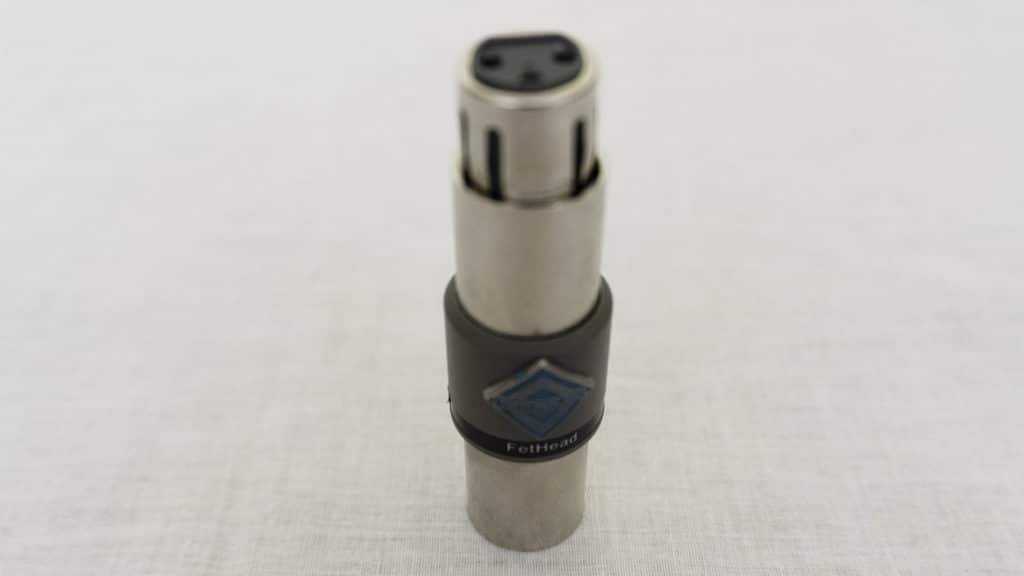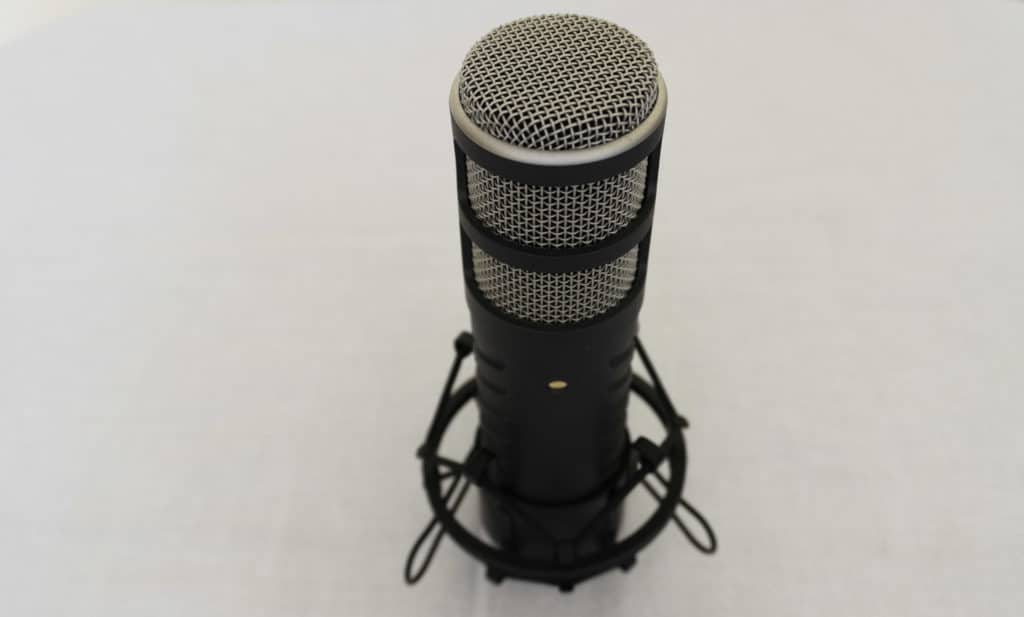Rode Procaster is the fourth microphone that I have ever purchased. I have been using it for almost two years now and this is a short and honest first-hand review.
Rode Procaster is a dynamic, cardioid pattern, end addressed, broadcast, XLR microphone. It will require an interface and XLR cable and won’t plug into your USB port.
Here is a quick brief and takeaway from this article about Rode Procaster:
- Dynamic broadcast cardioid polar pattern microphone
- Very good value for money
- Costs $160 or $230 depending on where you live
- Good noise cancellation
- Sturdy
- Inbuilt pop-shield
- A bit muddy
- End addressed
- Warm tone
- Proximity effect
Good value for money
I have bought Rode Procaster for GBP 131 (the price is still the same) which at this moment is equal to USD 163 or EUR 146. The reason for choosing Rode Procaster was that it is one of the more affordable quality dynamic microphones, that it is if you are a European, which I am.
I don’t know the reasoning for this, but basically, all Rode production is cheaper in Europe compared to USA. If you were to buy Rode Procaster from USA Amazon webpage you would be currently paying $204 which is roughly 20% more than in Europe. Also, keep in mind that most of the stuff you buy in European Amazons are generally more expensive than in USA version.
For comparison, if you are European you would be paying GBP 589 ($733) for Shure SM7B which is priced $399 in USA Amazon. That is a whopping 45% difference in price.
Heavy
Rode Procaster is one of the heavier microphones weighing 745g or 1.64lbs. For comparison, Rode NT1 weighs 440g and Shure SM58 is only 300g.
Nevertheless, I have never found weight to be much of a problem. I am using a cheapish, lowest quality swivel arm which cost me GBP 10 ($12) and at first, I was worried it couldn’t handle its weight but after all this time it has never troubled me.
So, despite the heavy weight you can use any swivel arm to hold Rode Procaster, it is not going to be a problem and you definitely don’t need to buy any of that expensive stuff.
Gain hungry

One of the troubles I have faced with Rode Procaster is how gain hungry it is. I am using a GBP 60 ($75) interface, a Behringer UMC204 HD. For reference, it is pretty much equal in pre-amp power to a more well known Focusrite Scarlett 2i2. Neither of these two interfaces alone is sufficient to power Rode Procaster.
I’ve had to set my gain at 100% for Behringer UMC204 HD to provide at least somewhat enough gain for Rode Procaster, but at this point, my interface started to introduce a lot of the pre-amp noise and it was unusable.
To solve the problem I had to purchase Triton Fethead which gave me an additional 27dB of clean gain. This had completely solved the problem, however at the cost of an additional GBP 80 ($100).
Frequency Response

This is a Rode Procaster microphone frequency response. The sound that comes from Rode Procaster microphone sounds rich and bassy, however, oftentimes it feels a bit muddy. That is probably due to a bump up in the 100-200Hz frequency range and I often find myself using an equalizer to remove some of that muddiness.
So, in overall the microphone doesn’t sound crystal clear and has some muddiness to it, but I love how it gives my voice some warmth. If you can spare some of the clarity for a pleasant tone it could work for you. Also, EQ usually solves most of my muddy problems.
Quality build
The microphone feels (and it is) very heavy and sturdy. It is all made from metal and I don’t know what it would take to damage the microphone. I have thrown the mic into a bag and carried it around with me a handful of times and it didn’t seem to put any damage onto it.
It also has a built-in pop-filter which prevents plosives and protects the microphone from spit and dust. It is nice since I don’t need to worry about it collecting dust when it stands unused and I don’t need to put on pop filter foam onto it.
I have never found a need to use an additional pop-filter for it. It saves a hassle considering I do not need to read the script on my screen through a pop-filter mesh.
Rode Procaster is an end addressed microphone, normally I wouldn’t care about whether it is end or side addressed type, but one complaint I do have about end addressed microphones is that I can’t properly use my Alctron PF8 (Kaotica Eyeball copy) acoustic foam on it. You can put Rode Procaster in it and you can make it work, but it is not going to be a smooth experience. Other than that, it makes no difference.

Noise cancellation
We know dynamic microphones are much less sensitive to noise that comes from further away when compared to condenser microphones. And so, using Rode Procaster I noticed it caches some of my keyboard clicking noise when I am typing or playing video games, but they are not so loud that I would find them distracting and in reality, it is easy to remove them from the audio.
Other than that it does a great job at picking up my voice and not caching most of the background noises. If my neighbours are being slightly noisy or if my fridge in the other room starts buzzing away Rode Procaster does a great job at keeping that sound out of my recording.
Also, with Rode Procaster I am not recording in studio environment. I chose to be my daily microphone when recording in a less treated home environment. For most of us, that is exactly where we are recording and Rode Procaster will attenuate some of that unwanted echo and noise much better than any condenser microphone.
Comparison
Now if you are looking to buy a dynamic broadcast microphone you have quite a few more options. When I was looking into buying Rode Procaster I also considered Shure SM7B, Electro Voice RE20, RE27ND and RE320. We can throw in Rode Podcaster as well, although that is an USB microphone.
They all seem to be great microphones and very popular among podcasters, however, Rode Procaster seemed at least for me the best value for the money.
Shure SM7B would have cost me equivalent to $733, RE20 would have been $612, RE27ND $820, RE320 $320 and Rode Podcaster $205. All of these except for a Podcaster are significantly more expensive than Rode Procaster and even though I really loved the sound of RE27 and SM7B I couldn’t justify $570 and $660 difference in price.
And when it comes to Rode Podcaster I wasn’t willing to buy a USB microphone, compromise my audio quality and pay $40 more, especially considering I already had XLR cables and an interface. Rode Podcaster could be an option for someone that doesn’t have an interface since that saves some money. But even in that case, I wouldn’t buy it considering it is more expensive than Rode Procaster and you can get the whole setup with Rode Procaster and audio interface and cables for almost the same price.
Proximity effect
Rode Procaster as the most dynamic microphone has a proximity effect. If you don’t exactly know what a proximity effect is, it basically means the more closer you get to the microphone the more bassy your audio becomes. If you start speaking really close to the microphone you will soon start sounding like a typical radio announcer.
Proximity effect only applies from (as the name suggests) close proximity so it is nice to have an option to bring up that announcer voice once in a while without having to use it all the time permanently.
Conclusion

I am still using the microphone almost daily. It has some drawbacks, the main for me is muddy sound quality. On the other hand, I love how it makes my voice sound warm. Also, if you are European it sells at a very affordable price and among broadcast dynamic microphones by far beats any competition in terms of value for money.
In my opinion, if you don’t already own a dynamic microphone (which you absolutely should if you don’t work in a studio-like environment) and don’t want to spend a fortune then you should get this microphone.
It is one of the best value for money options and will provide good quality sound. If you don’t have a well trained ear you will have a hard time noticing a difference between a ~$160 Rode Procaster and much more expensive microphones.

Pingback: USB vs XLR Microphone | Which is Better? | Voice Over Tip
Pingback: A Comprehensive Guide to Microphone Specifications | Voice Over Tip
Pingback: What is the Best Cheap Dynamic Microphone? – Voice Over Tip
Pingback: How to Avoid Breathing Noise When Recording? - Voice Over Tip
Pingback: Alctron PF8 Review | Cheap Kaotica Eyeball Alternative - Voice Over Tip
How on Earth can an foam ball benefit this mic when it’s an End Address Mic and not a side address mic ?,
I totally agree, regular acoustics foam ball is hard to use on end-addressed microphones, however, it’s somewhat possible to apply it if you angle the microphone diagonally towards yourself. Otherwise, as far as I know, only Kaotica make acoustic foam balls for end-addressed microphones.